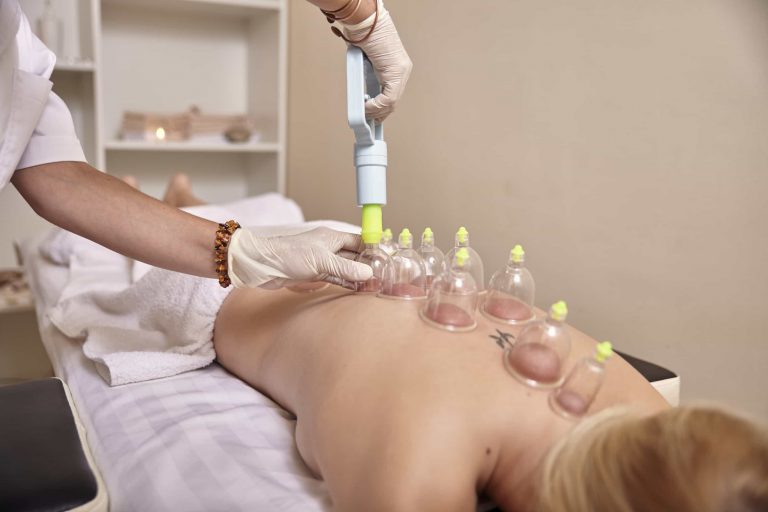According to traditional Chinese medicine (TCM), cupping therapy is used for shoulder, neck, and knee pain, twisted or pulled muscles, sunstroke, headaches, chest pain, and even indigestion. In addition, it is a form of alternative medicine in which local suction is created on the skin to dispel stagnation and stimulate blood circulation.
When should you have cupping therapy?
Cupping therapy is a non-intrusive practice; however, it does have side effects — the most common being dizziness. In addition, for people who have a weak constitution, who have an empty stomach before cupping, or who have to cup over a large area of their body, their body may not be able to stand the pressure. As a result, they may experience dizziness.
The patient should take a break, rub and raise their shoulders, rub the philtrum, and eat and drink something to avoid this.

When the body is moist, blisters may appear after cupping. To avoid this, the cupping procedure should be limited to 10 minutes. If the skin has blisters or is damaged, no cupping should be administrated on that particular area.
Cupping therapy is not universally friendly to all. People with skin allergies, rashes, eczema, or other skin ailments should exercise caution and avoid cupping areas of affected skin. In addition, those with a weak constitution, pregnant women, children under the age of six, and those with diabetes, high blood pressure, or heart diseases should not attempt cupping, given the high risk of adverse side effects.
It is administered on dense muscle areas, such as the shoulders, back, and thighs. Blood capillaries will rupture under suctioned skin, so the site must be cleaned with alcohol to minimize infection. Sweating should also be avoided before the procedure.

The success of cupping
Director He Zongrong of the Chinese Medicine Department at China Medical University Beigang Hospital (Taiwan) noted that, like acupuncture, moxibustion, scraping, and herbal medicine, cupping is a therapeutic means to deal with opposing forces inside the body.
Director He recalled a case of a male patient who suffered from headaches and a strained neck. The patient unsuccessfully tried several traditional methods to alleviate the pain. Director He diagnosed his case and administered a 10-minute session with cupping and scraping, which immediately relieved the pain.
In all cases, your symptoms should be assessed individually by a health care professional to rule out other possible causes.








